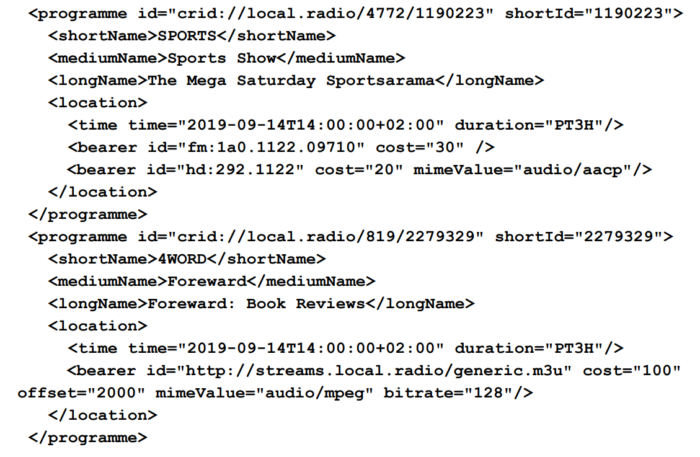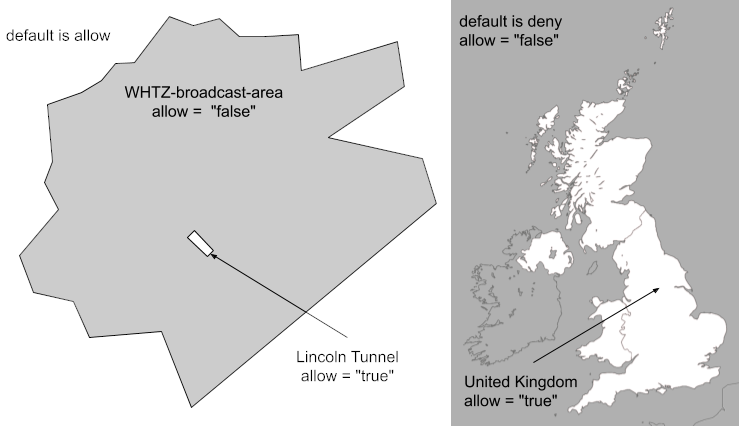Broadcast radio has a predictable coverage area, which makes it easy to know where listeners will be located. Adding streaming into distribution makes that more challenging.
As rights to content, particularly music and sports rights, get more complex (and more expensive), constraining access to known areas and platforms gets more important.
So we’ve updated our Service and Programme Information (SPI – TS 102 818 v3.3.1) standard to add two important features:
- time of day controls – prevent access to specific platforms (stream or broadcast) based on time of day
- geo-fencing – prevent access to specific platforms based on physical location
Time Of Day Controls

Here’s some examples for controlling access based on time of day:
- You may have different programmes going out across different bearers for a short period of time. For instance, a News Programme on Digital Radio and and an Arts Review on FM. You can accurately the describe the programme going out on each bearer during that time.
- You may not be able to offer a Sports Programme on streaming. You can define that programme as only going out on broadcast, and “re-direct” streaming listeners to another source – perhaps an alternative programme or an announcement explaining why they can’t listen to the Sports programme.
You specify these variations in the PI (Programme Information) files for each day/time that they apply. You should still make sure that the PI contains 24 hours of contiguous programming for each bearer, and that the programmes are clearly part of that Service.
Geo-fencing controls

Here’s some examples for controlling access based on location:
- A station prefers listeners not to stream where there is good FM coverage, because streaming is more expensive (technical and rights costs). They define their FM coverage area and “deny” access to streaming within that area. Now streaming should only happen outside the good coverage area.
- The same station may have a known “hole” in their FM coverage, so they can “allow” streaming within the coverage hole, within the good coverage area. So their geo-fencing can contain nested areas.
- A different station may have rights to a sports event but only within their country. They can “allow” streaming within their country, and “deny” it everywhere else. If they’re clever, they can have an alternate stream with different content that is provided outside their country instead.
These controls are not just applicable to streaming, they can be applied to any “bearer” (analogue, digital or streaming distribution platform), and they can be applied to the whole service, or to individual programmes during the day.
Time of day and geo-fencing controls require manufacturers to implement them and broadcasters to define them properly. We’ll be working to help everyone understand what a good implementation looks like.

